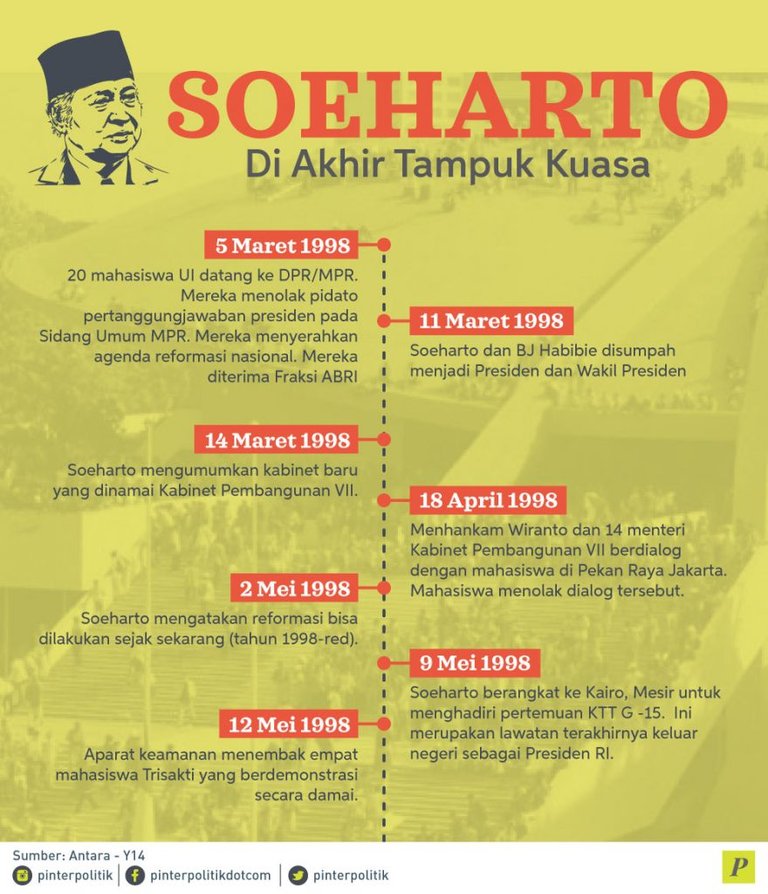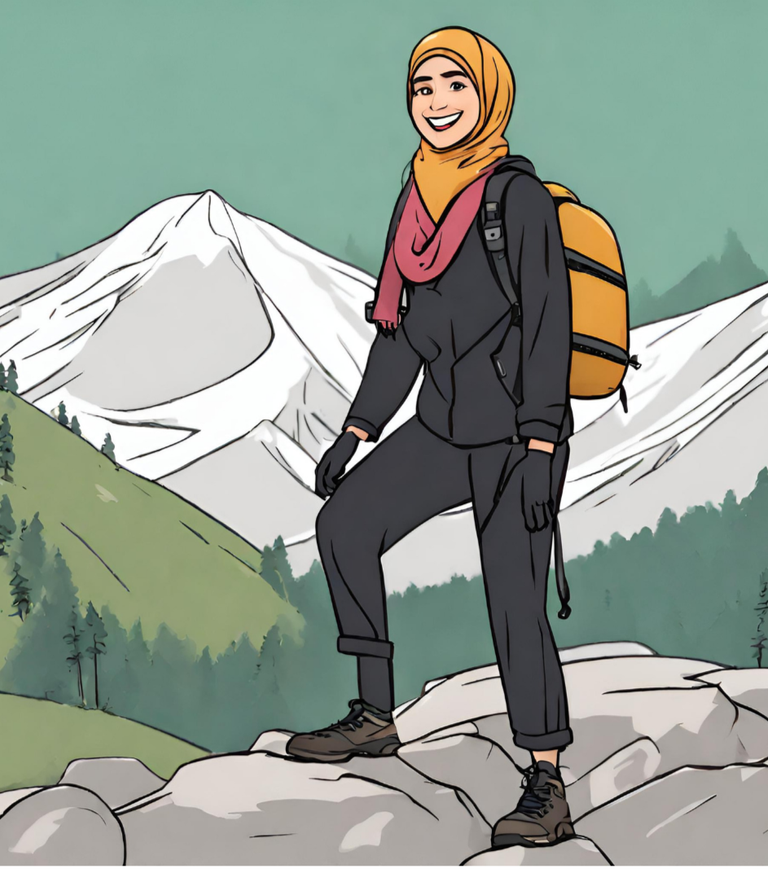
If there is any questions,
‘when did you become literate about history?’
‘what kind of history first interested you?’
‘who was the person who influenced you to realise how important history is?’.
.
In 1998 when I set foot in Jakarta, when the water I drank stank even though it was clear, when a building caught fire and someone carried the loot from a building home, when Acong, my mother's neighbour in Jakarta just stood there staring at the cloudy Jakarta sky, I reviewed it as, ‘Oh, there it is... Jakarta on fire’.
I was still in primary school at the time. My father took me on holiday to see the gigantic city of Jakarta. Not long after I went on holiday, the television was showing a mob rampage. Students were marching for the ouster of the new order president, Soeharto. The man who was supposed to protect Indonesia from the economic downturn of the old order era had actually inflicted new wounds: debts to the IMF that have left Indonesia in chaos until now. The collapse of private banks and the collapse of public confidence in banking, as well as some important state assets that were simply released abroad, not to mention ... the opening of access to imports that harmed the country.
As I grew older, I learnt that the flashbacks from my childhood greatly influenced my view of Indonesian history. As it turned out, in addition to economic problems, there were also huge human rights violations in 1998.
Books about history influenced by childhood experiences
Just like other children, I grew up with age-appropriate books. As a child I liked books about policy, ora, towards adolescence I liked romantic books, until entering young adulthood until adulthood my reading tastes then leaned towards books with historical fiction genres.
.
Many of my reading books refer to the history of the ‘98 era, such as books by Leila S. Chudori that tend to continue to talk about her consent to that era. One of them is entitled PULANG (Home).
- PULANG (HOME) -History fiction

I mentioned in my review of NAMAKU ALAM that I read PULANG around 2015. In that book, apart from talking about political exiles in European lands, it also talks about the seconds of the riots throughout ‘98 from January to the outbreak in May “98. The story of the children of political exiles who continued their parents” fighting spirit for justice, brought Segara Alam, Lintang Utara, Bimo, et al to take to the streets and organise strategies so that the efforts of mass student actions in bringing down the regime were successful.
Leila, as is well known, is a Tempo journalist, and writes her book with flair, making all the events in her fictionalised book very real. Even the meetings of great artists like W.S Rendra and public figures like Abdurrahman Wahid and Emha Ainun Najib were married in the book.
You know what's amazing? Those illustrations are not fiction! They are real. How did I know? It just so happened that I also read a book published by TEMPO in 2019 titled ‘DETIK-DETIK TERJADINYA KERUSUHAN MEI 1998’. so, let's move on to book 2.
- DETIK-DETIK TERJADINYA KERUSUHAN MEI 1998- Documentation Book

iPusnas
This book, published by TEMPO publishing in 2019, is not thick. With only 124 pages, it describes event after event during the heat of Jakarta leading up to the ouster of the Soeharto regime. The book even begins with the irregularities of the joint fact-finding team, or TGPF in Indonesia. The team that was appointed to find facts related to the human rights violations riots was politically charged and caused its members to split into two sides.
In addition, towards the outbreak of the May riots, the generals who suddenly disappeared and unleashed the security of Jakarta made these security and military leaders accuse each other. Even Wiranto and Prabowoo accused one of them of deliberately leaving Jakarta in an unsafe state.
Many witnesses were suspicious about the actual organised treason, the tattoo symbols of the members referring to a martial arts group led by Prabowo, and many more. In an interview with TEMPO in 2003, Prabowo said that the witnesses were vague and there was no evidence, after all, the self-defence organisation had been set up to augment the security forces. More grey assumptions that lead nowhere. In the interview, Prabowo also felt that he was a victim of pointing fingers without evidence, until he was removed from his position in the military.
About Yogya the sea of fire. The Yogya referred to in this book is not Yogyakarta, but a supermarket tragedy in Klender called Yogya, which was set on fire by ‘organised rioters’ killing more than 400 people including women and children.
About the missing activists and students, the students who were shot, the Chinese women who were victims of rape, and much more.
I like this book because it is complete even though it is thin. From this thin book, questions about related history became many more. I have to read more books to satisfy my curiosity.
Btw, I read this book from ipusnas application. Thank you very much for reading my review.

Hi, I am the child of the universe, I like to read books with various genres. I was born in the city of batik but can't draw batik yet. I want to be a novelist, but my works are only short poems that are included in anthology books.
please share my content if you feel my content is good for everyone to read. Thank you. Let's be friends!